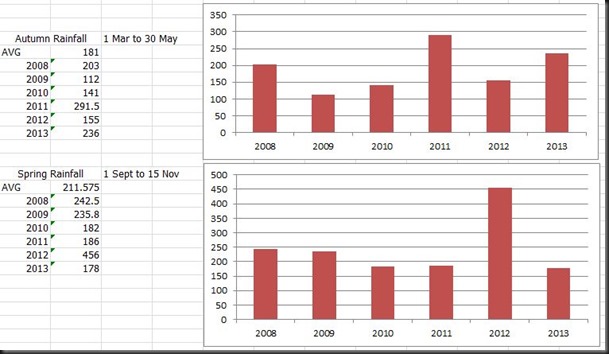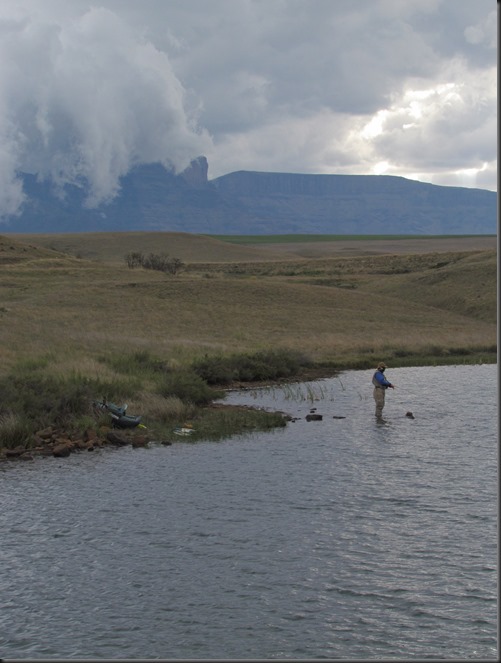I was in a doctors waiting room the other day, when one of the professionals emerged from her office and remarked to the receptionist : “Did you know, that in the old days we used to have storms on summer afternoons, and the sun would come out again afterwards! ”.
It is not politically correct to call this stupidity. So someone please help me with a politically correct term that is vastly more disdainful!
Given that weather is what people use to pad inane conversations, there is a lot of babble out there that serves only to heat the air unnecessarily. But as a fly-fisherman, and a fisher of rivers, weather is not just wadding material. It is important stuff! And important stuff is best spoken about with facts, figures, and authority!
I have been keeping track of rainfall, temperatures, arrival of the cuckoos, first frosts, and the like for a couple of years. My record is by no means long enough to start drawing conclusions about global warming. Many people draw conclusions about global warming from a single afternoon’s temperature, but let’s not fall into that trap.
What I have had a bash at, is graphing rainfall by the season. We all know that in mid summer (over Christmas for us here in the Southern Hemisphere), it pours with rain, and the rivers run in spate. That is almost a given. But I got to wondering if we couldn’t draw some more useful info, that goes a bit deeper than annual rainfall. I have tried to plot the spring, and the autumn rainfall and temperatures. In that way I can look at dry springs, wet autumns, cold Septembers and the like, to start looking at their significance in terms of my fishing.
Rainfall record of the last 6 years as read at Hilton, and split into Autumn and Spring rainfall:
For now the record spans only a few years, and I can’t really draw any conclusions, but what I have enjoyed is looking back after a particularly dry, hot, wet or cold week, to see what it was like over the last 5 years in that same week of the year.
It has been interesting to note that the cuckoos arrive pretty much on cue every year. The number of frost days varies greatly though. Here in Hilton there have been as few as 20 frost days, and as many as 65. Maximum temperatures are surprisingly predictable. Arrival of the first 60mm of spring rain is not. Berg winds occur when they are supposed to. The severity of winter snows (on the berg) is highly variable. My own demeanor is distinctly different when night-time temperatures drop below 10 degrees C , and when they do not. Our Trout are doing very well at the moment despite the relatively dry spring season, but we had an unusually wet autumn last season. I don’t know whether to read anything into that.
I sometimes walk across a squelching lawn, climb into my bakkie, and drive to a very low and sad Trout stream. And just last week-end parts of the Kamberg had 80mm on Saturday, and the Umgeni catchment got a great deal less.
My record is taken at home, at an altitude of 1,111 metres above sea level. All our Trout fishing happens above 1,200m ASL, and much of it some distance off to the West of here. When I remark on a warm winter (and mine is based on hard data!), a farmer from further upcountry often has a different take on it. And farmers know their weather!
That has me thinking: surely we can deduce the suitability of an area for Trout, based on how many nights per year it experiences temperatures below 10 degrees?
I must go and walk the dog now. The storm has passed, and the sun has come out.

One Response